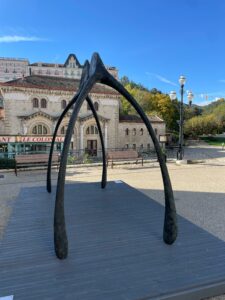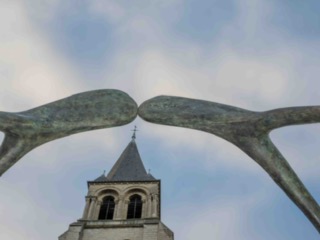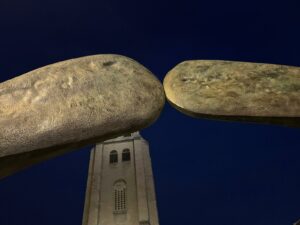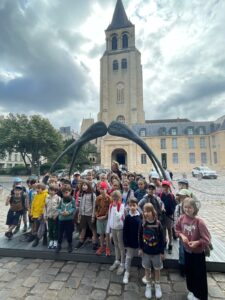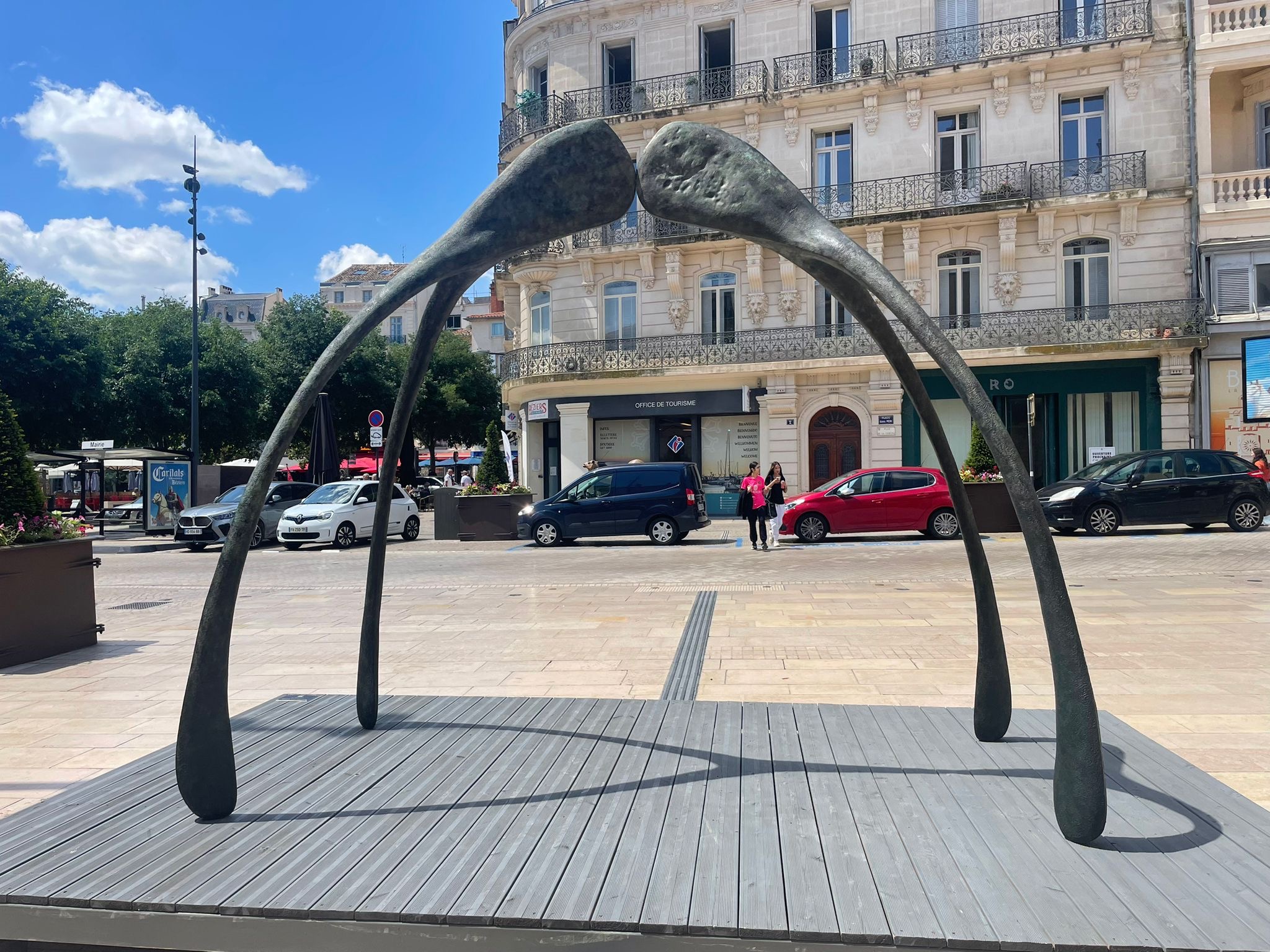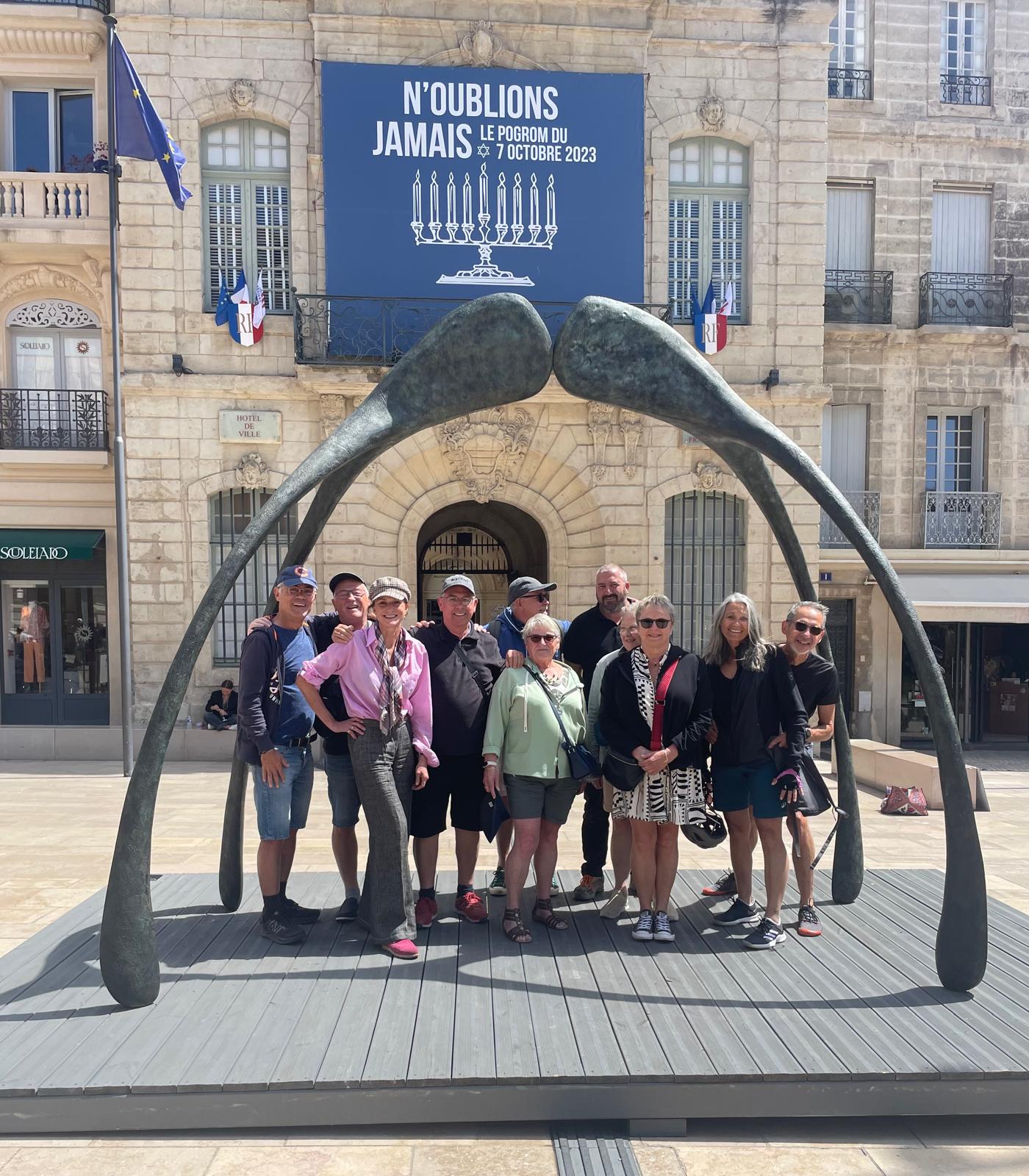HISTORY & PATH OF SCULPTURE
Two giant 3-metre bronze furculas or "wishbones" face each other, forming an arch,
an Arc of Hope.
Marie Laure Viebel's "wish bone" revisits an ancient tradition dating back to the Etruscan period, 900 years BC. During divinatory rituals, the Etruscans used hens and roosters to interpret the will of the Gods.
The furcula (or wishbone) was carefully preserved for its unique shape, which resembles a woman's crotch.
The tradition of breaking the bone did not exist at the time: it had to be kept whole, otherwise its powers would be lost. It was the Romans who changed the tradition: "There were too few sacred bones, and too many lovers of good graces". So they came up with the idea of breaking the bone into two parts.
The Roman conquests allowed this tradition to spread from country to country, well beyond the Mediterranean basin.
Later, Europeans carried this superstition with them as far as America.
A "Cultural Olympiad" label
It was as part of the 2024 Olympic Games in Paris that the sculpture Front contre front, Ensemble was awarded the "Cultural Olympiad" label.
Paris, Olympic city
The sculpture was exhibited to the public for the first time in the heart of the capital, on Place St-Germain-des-Prés, opposite the church, from July to September 2024.
Châtel Guyon, Sept.2024- May 2025
The sculpture was made by French craftsmen in the workshops of the FONDERIE ART FUSIONS foundry, located in the heart of the Auvergne region, just a few kilometers from Chatel Guyon.
In front of the grand theater of this town renowned for its spa architecture, the sculpture paid tribute to the work of these craftsmen who serve artists from all over the world.
Béziers, City of Art and History
The cultural policy of Béziers, one of France's oldest cities, is strongly influenced by its status as a Ville d'Art et d'Histoire.
This distinction encourages the implementation of cultural projects.
The installation of "Front contre front, Ensemble" on Place Gabriel Péri, opposite the town hall, helps to animate the city during the 2025 summer tourist season.
And afterwards!
After Béziers, this sculpture will continue to travel around France. n addition, a larger project (7 m high) in front of the Panthéon in Paris is under negotiation.
The ultimate goal is for this monumental sculpture to travel to Los Angeles, Olympic city in 2028, as a link between Europe and the United States.
